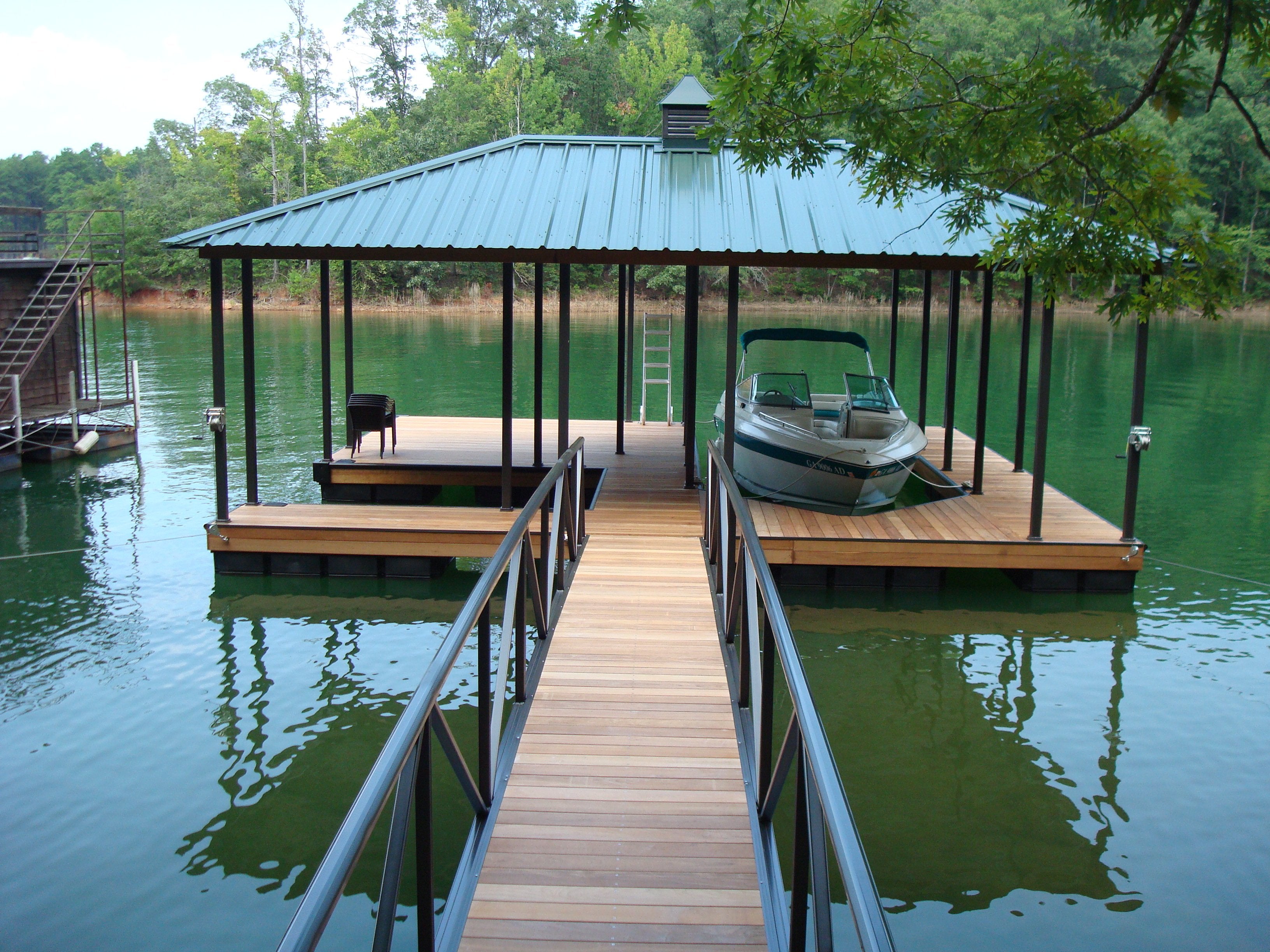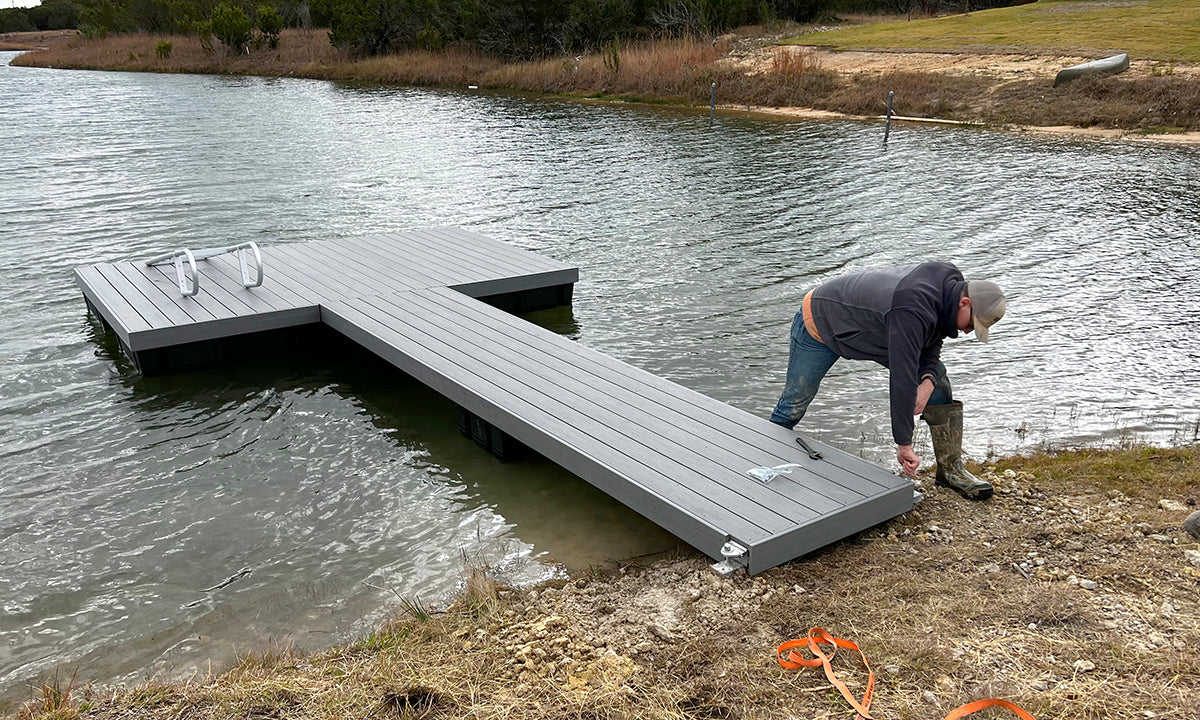Upgrade Your Waterfront With Durable Floating Docks
Upgrading your beachfront with durable floating docks can dramatically enhance both performance and aesthetics, supplying a functional service for numerous water tasks. With a range of materials readily available, consisting of low-maintenance options and conventional timber, choosing the appropriate dock can complement your personal style and satisfy functional demands.
Advantages of Floating Docks
Floating docks deal a wide variety of advantages that enhance their allure for different maritime applications. Unlike conventional fixed docks, floating docks rise and loss with the trend, guaranteeing consistent access for watercrafts and watercraft no matter of environmental conditions.
In addition, floating docks are much easier to set up and relocate, offering flexibility for seasonal or short-term use. Their modular style allows for modification to fit particular demands, whether for personal marinas, residential watersides, or business applications.
Furthermore, floating docks produce very little disruption to the aquatic setting, maintaining local ecosystems and minimizing the chance of erosion. They additionally provide improved safety and security and stability for individuals, as their resilient nature offers a more flexible surface than rigid structures.
In addition, floating docks can help with a varied series of activities, such as fishing, swimming, and leisure boating, making them a useful asset for waterside growth. Their convenience and practicality make floating docks a favored option for a selection of naval tasks.
Choosing the Right Materials
Choosing proper products for floating docks is crucial to their long life, efficiency, and total effectiveness. When selecting materials, think about aspects such as ecological direct exposure, upkeep demands, and architectural stability. Typical materials include wood, plastic, aluminum, and composite options, each offering distinct advantages and drawbacks.
Wood, while aesthetically pleasing, requires normal upkeep to avoid rot and decay. Pressure-treated timber can improve longevity, yet it might still surrender to water damages gradually. Plastic floats, frequently made from high-density polyethylene, are resistant to corrosion and require marginal upkeep, making them an attractive choice for low-maintenance applications.
Light weight aluminum is an additional feasible alternative, understood for its strength and light-weight residential or commercial properties. It is resistant to corrosion and can stand up to severe weather conditions, although it may be extra pricey than other products. Compound materials combine the very best attributes of wood and plastic, offering a resistant and low-maintenance alternative that resembles the appearance of timber without the connected drawbacks.
Inevitably, the option of product ought to line up with the planned use, ecological factors to consider, and budget restraints, making sure a functional and sturdy floating dock that meets your details requirements.
Installment Process Review
The successful installment of a drifting dock counts on mindful planning and implementation, ensuring that it runs effectively in its designated setting. The initial step includes assessing website problems, including water depth, coastline attributes, and prevailing weather condition patterns, which will certainly inform the dock design and anchoring system.
Adhering to the website assessment, the next stage is to prepare the floating dock components. This includes setting up the structure, securing floats, and affixing any required equipment. It is critical to ensure that all connections are waterproof and durable to withstand marine problems.
Once the dock is find this set up, the installation process commences with positioning the dock in the water. This can include a crane or other training equipment, particularly for larger frameworks. Appropriate placement is crucial for functionality and safety.

Maintenance Tips for Long Life
Regular upkeep is necessary for guaranteeing the long life and ideal efficiency of a floating dock. To attain this, begin with regular assessments at least two times a year, focusing on the honesty of the dock's structure, consisting of the flotation gadgets and connecting equipment. Seek indications of damages, wear, or corrosion, and address any kind of issues immediately to stop additional damage.
Cleaning up is an additional essential aspect of upkeep. Eliminate debris, algae, and barnacles from the dock's surface area to avoid unsafe problems and maintain aesthetic charm. Make use of a mild detergent and a soft brush to prevent harming the dock's products.
In addition, guarantee that the dock is effectively anchored and secured to stand up to seasonal adjustments in water degrees and weather. Inspect the anchoring system for security and make adjustments as required.
Enhancing Your Outside Visual
To develop an aesthetically appealing outdoor space, integrating a floating dock can substantially boost the general visual of your waterfront home. Floating docks are not just practical however can likewise act as a striking focal factor that matches the all-natural environments - floating dock builder. Readily available in various materials and designs, these docks can be tailored to match your building's building design and landscape
The enhancement of ornamental aspects, such as integrated lighting or stylish barriers, better boosts the dock's visual appeal. Think about using natural timber surfaces, which blend seamlessly with the environment, or going with contemporary materials like aluminum or composite outdoor decking that use a smooth, contemporary appearance.
Tactically putting planters or seating areas on or around the dock can develop inviting spaces that urge relaxation and enjoyment of beachfront views. Additionally, integrating colors and appearances that balance with your landscape will develop a cohesive visual throughout your outside area.

Conclusion

Upgrading your beachfront with resilient floating docks can webpage significantly boost both functionality and aesthetics, offering a functional service for numerous water activities. Unlike standard set docks, floating docks surge and fall with the trend, making certain consistent access for watercrafts and boat no matter of environmental conditions.Choosing proper products for floating docks is crucial to their longevity, performance, and overall effectiveness.Once the dock is set up, the setup process begins with placing the dock in the water.In recap, floating docks deal countless advantages, including versatility to water degree adjustments and a variety of material options.
Comments on “Navigating the Options: Selecting the Right Dock Company for Your Floating Dock Task”